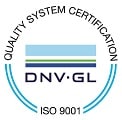Creating the design specification is a highly complex process, requiring the time and experience of a team of talented professionals. Decisions made at this early stage have an enormous impact on the success of the project. The customer’s investment in this phase is consistently paid back in more effective designs, timely delivery, and reduced overall project costs.
The Specification Phase drives the whole design process by carefully defining the specific goals to be met. It is critical that we understand and document the customer’s requirements, and that the customer understands and agrees to these details, before the actual design work proceeds. We find that properly written specifications result in the best designs for the least cost. This approach minimizes redesign and keeps the project on track to a successful completion. The steps in the specification phase include:
Project Setup – Each project is assigned a unique number which is used to track and catalogue all of our time and material, notes, email, parts, drawings, and other project costs and documents. Our assigned Project Number is provided to the customer with a short name/description. This designation will be consistently used for all communications, billings, specifications, and reports.
System Specification – This is a detailed technical description of the system. A sample specification outline is available by request.
Test Specification – This describes the procedure that will be used to determine how to test the system for acceptance. This specification will often reference the System Specification with some additional details on testing. A sample specification outline is available by request.
Software Specification – We describe the software in enough detail to allow a software engineer to estimate the size of the programming effort and to begin writing code. This document will often reference the System Specification, and may include overall flow diagrams, display screens, storage and interface requirements, and a user interface description. A sample software specification outline is available by request.
Preliminary Design – We draw preliminary rough schematics, select a processor, and do a rough mechanical layout based on the System Specification.
Customer Design Review – We present the System, Test and Software Specifications, and Preliminary Design to the customer in the form of a Design Review to be sure that they fulfill the project requirements.
Once the project specifications are approved, we are normally able to provide a cost estimate for the Detailed Design and Build/Test phases of the project, along with an estimated schedule and milestones. It should be noted that even the most well written specifications often still change during the design process.

